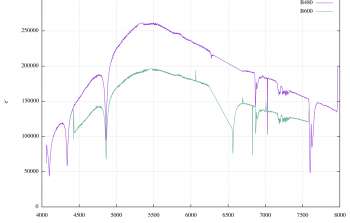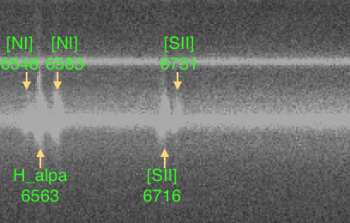sci23038 — Announcement
Performance of New GMOS Gratings
July 17, 2023
The new B480 diffraction gratings for spectroscopy are available for science at both GMOS-S and GMOS-N on Gemini North. These were acquired as part of the Instrument Upgrade Program. They were designed to offer wider wavelength coverage than B600 (at a slightly reduced spectral resolution) and a balanced response across the 400–900 nanometer interval (as compared to the R400 grating, which is heavily blazed to the red wavelengths). The characteristics of all GMOS gratings are summarized here.
Below are two examples showing the improved performance as compared with the two most requested gratings (R400 and B600). First, a spectroscopic standard was observed consecutively with B480 and B600, in order to compare directly the spectral coverage and response.
Second, the galaxy ESO 507-G70 was observed with B480 and R400 under similar conditions with the 0.75-arcsec slit and using nod and shuffle longslit spectroscopy. This is a LINER spiral galaxy featuring a double nucleus. The slit was aligned across both nuclei. The data were reduced with the same procedure for both gratings, to highlight the balanced response across the whole spectral range of 460–870 nanometers achieved by the new grating. The R400 spectra fade considerably toward the blue end (since its blaze wavelength is in the red), to the point that the bluer emission lines from the primary nucleus are not even visible. On the other hand, in the B480 spectra these lines are visible — as is the underlying continuum — and the spectra show good overall signal across the whole range.

Figure 1: Plots of the 1D extractions of the reduced, wavelength-calibrated spectra of the standard star LTT 3218, observed with B480 and B600 on the same night. Exposure time was the same for each grating. B480 throughput in e-/pix is higher than B600 over the full wavelength range (the straight line between 625 and 651 nanometers is the interpolation across the GMOS-S CCD faulty amplifier#5 gap)
![]()
![]()
Figure 2: Reduced spectra of ESO 507-G70 observed with R400 (top) and B480 (bottom). The spectral features of interest are marked with labels in the latter.
About the Announcement
| Id: |
ID
sci23038
|


